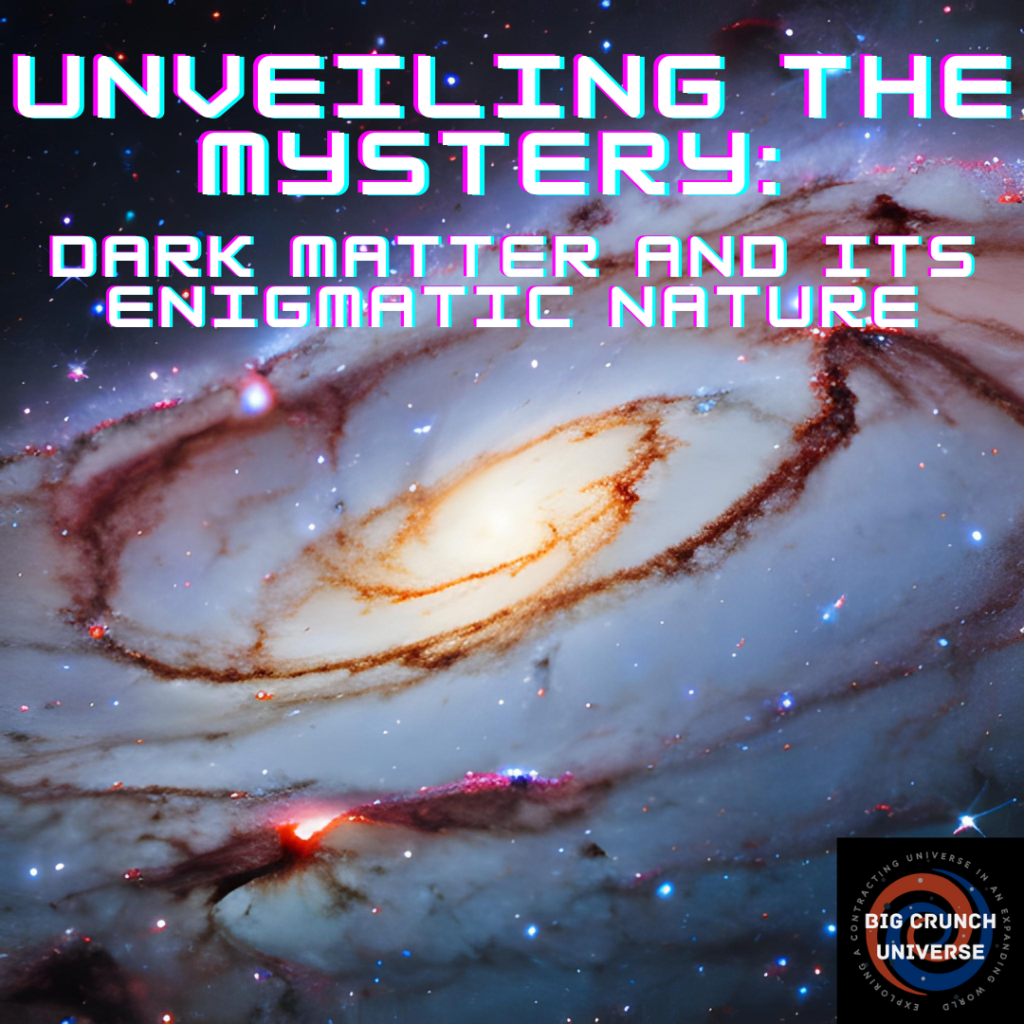Unveiling the Mystery: Dark Matter and Its Enigmatic Nature
Today, we’re diving into the realm of astrophysics to unravel the enigma of dark matter. Picture this: as you gaze at the night sky, what if I told you that most scientists believe that a significant part of the universe is invisible to our eyes? Intriguing, right? Well, let’s embark on this cosmic journey together and explore the fascinating concept of dark matter.

The Cosmic Conundrum:
First things first, let’s address the big question: what exactly is dark matter? In simple terms, it’s a hypothetical substance that accounts for a substantial portion of the mass in the universe. The catch is that it neither emits nor reflects any detectable electromagnetic radiation, making it invisible to our traditional telescopes.
What’s the Matter?
You might be thinking, “Well, if we can’t see it, how do we even know it exists?” Great question! The existence of dark matter was initially postulated by Swiss astronomer Fritz Zwicky in the 1930s. Zwicky observed that galaxies in the Coma Cluster were moving at surprisingly high speeds, given the amount of visible matter present. He concluded that there must be some invisible matter at play, tugging on these galaxies, and thus, dark matter was born.
Cosmic Dance:
So, what role does dark matter play in our cosmic dance? Well, it turns out that dark matter’s gravitational pull affects the distribution of galaxies and other cosmic structures. It acts as cosmic scaffolding, shaping the universe we see today. Without dark matter, galaxies would not have formed and the universe would look drastically different. It’s like the hidden architect behind the scenes, orchestrating the cosmic symphony.
Detective Work:
While dark matter remains elusive, scientists have developed several ingenious methods to detect its presence indirectly. One of the most significant pieces of evidence comes from the study of galaxy rotation curves. Imagine a spinning disk-like galaxy: according to the laws of physics, objects farther from the center should move slower. However, observations have revealed that the outer regions of galaxies rotate at similar speeds to the inner regions. This suggests the presence of invisible mass, or dark matter, providing the necessary gravitational pull to keep these outer regions in line.
Cosmic Lensing:
Another powerful technique used to study dark matter is gravitational lensing. When light from a distant galaxy passes through the gravitational field of a massive object, like a galaxy cluster, it gets bent, distorted, and magnified. By observing these lensing effects, scientists can map the distribution of dark matter in the universe. It’s like using a cosmic magnifying glass to see the invisible.
Candidates and Clues:
While the identity of dark matter remains a mystery, scientists have put forth various intriguing candidates. One prominent contender is the Weakly Interacting Massive Particle (WIMP). WIMPs are hypothetical particles that barely interact with ordinary matter, making them incredibly difficult to detect. The search for WIMPs involves experiments deep underground, shielded from other particles, to catch a glimpse of these elusive entities.
Beyond the Standard Model:
Dark matter not only challenges our understanding of the cosmos but also pushes the boundaries of particle physics. It serves as a crucial puzzle piece in the quest to go beyond the Standard Model, the prevailing theory describing the fundamental particles and forces in the universe. Solving the dark matter riddle could revolutionize our understanding of physics and provide insights into the nature of the universe itself.
The Unseen Force:
Dark matter is an invisible, elusive substance that constitutes a significant part of the universe’s mass. Its presence is inferred through its gravitational effects on visible matter. Scientists continue to explore various detection methods and study its impact on cosmic structures. But is it possible that the dismissed theory of a contracting universe could explain what dark matter cannot?